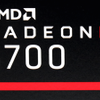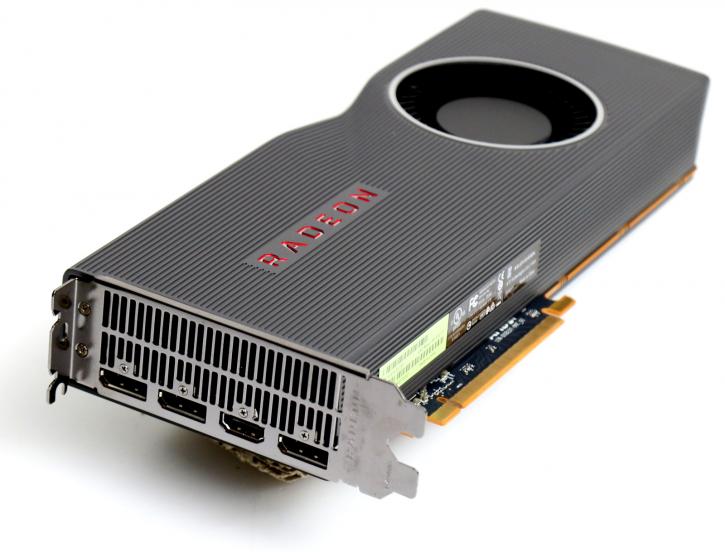Final words and conclusion
Final words and conclusion
It is good to see AMD back on track with some mainstream to high-end positioned Radeons. 7nm, a new architecture, GDDR6 the specs all tick the right boxes. Seen from Polaris AMD made a HUGE step forward in performance. In fact, NAVI sits at the Vega performance level. So the improved architecture is sound, and works. My fear, for now, is that the products might be priced a notch too high even after the pre-launch price drop. Team green just outed their super products, and the RTX 2060, 2070 Super will be fighting off NAVI10. The realm AMD is sitting in performance wise with the RX 5700 series is the non-Super models 2060 and 2070 with exceptions here and there. Then there is, of course, the discussion on how relevant you find hardware accelerated Raytracing and Tensor support. Most of you don't care at this time, but much like anything in the tech industry, everything will evolve, and AMD positioned itself to be smack down in the middle of that next step in the gaming evolution. By not offering at least RT support, their trump card really needs to be pricing and proper shader based gaming performance.
NAVI GPU & performance
Both Radeon RX 5700 cards show good, in fact, super strength at Quad HD resolutions in that 2560x1440 realm of resolutions. Games like Battlefield V will make you aim, shoot and smile. As always comparing apples and oranges, the performance results vary here and there as each architecture offers advantages and disadvantaged in certain game render workloads. Battlefield V and Metro: Exodus skyrockets for NAVI. So you'll be seeing wins and losses in perf compared to team green. AMD has got the right amount of graphics memory applied, the right type this time as well as 8GB GDDR6 graphics memory running over that 256-bit bus at 14 Gbps, is done right. The new architecture does show strength and IPC increase, especially seen from Polaris the results are pretty amazing. However, that statement has no merit, as they are not priced the same region.
In fact, the cards are close and sometimes on top of the Vega 56 and 64. Here and there even matching the Radeon VII. We're totally certain that all the Vega cards will phase out soon enough as there is no reason for them to be around anymore. Realistically the XT card makes good sense in the Wide Quad HD space (monitor resolution of 2560x1440) and can even properly handle games at 3840x2160 (Ultra HD). Result vary per game title though. The regular 5700 definitely is a 2560x1440 card but also is no slouch in certain Ultra HD titles.
Pricing
At 349 USD for the Radeon RX 5700 the price tag seems fair but realistically we feel this should be a 299 USD product. The XT, however, remains steeply priced at 399 USD, and while it is the more interesting product of the two, it needs to be that 349 USD product, IMHO. I'm not saying the card isn't worth the money, 7nm is more expensive to fab. However, everything needs to be placed into a competitive perspective. At launch, we're not even sure if there will be heaps of volume for these cards available. So while I understand these cards are priced like that we do feel it's a notch too much for this product range and category. Hey, I say the same stuff about RTX series from NVIDIA. The pricing is off and odd these last few years.
Cooling & noise levels
The new coolers really are aesthetically new. Aside from the graphite thermal pads, the base cooling design has remained the same for the reference product. We've never been a fan (pardon the pun) of the single fan blower style coolers and it really is time for AMD to move to something better. They keep temperatures under control but remain somewhat noisy. Ergo, most people should really focus on aftermarket products from AIB partners. So yes, personally, I would be more interested as to what the premium cooling solutions from AIB partners will bring on cooling and noise levels.
Power consumption
Moving from 14nm to 7nm logically could lower power consumption. Well, that is true ... however; AMD used that delta to clock these cards higher, close to 1700~1800 MHz during gaming. So they traded in that lower power consumption for more performance, hey it works. The TDP we measure to be roughly 225 Watts for the Xt and 180 Watts for the regular RX 5700. That number varies a bit per game title, workload, resolution and even refresh rate of course. It's a substantial wattage, especially compared to the competition's products in the same performance bracket.
Overclocking
Each launch we run into issues with tweaking, this time AMD confirmed it and posted a new driver over the weekend to bypass some issues. This round we bump into memory limiters and a Wattman issue that limits tweaking results. So we passed on overclocking any deeper. We don't like Wattman software either, it's over-engineered up-to a point where it's just not user-friendly or fun to work with anymore. Once we get Afterburner up-to-snuff and AMD has a proper driver (the updated one didn't yield many results either), we'll revisit overclocking but even then we doubt it'll be a thrilling thing to accomplish a tweak, time will tell though.
Conclusion
AMD has released NAVI aka Radeon RX Series 5700 on time and on schedule. I honestly had my doubts after Intel cannibalized a lot of staff from the AMD team. Both products perform as expected and sometimes even better than that. And that is testimony towards the newly updated rDNA architecture. Smarter caches and a rearranged shader structure, as well as GDRR6 at 14 Gbps, are key here. It is impressive to see what the 7nm node brings extra in performance. These cards behave extremely well in the normalized 2560x1440 range of resolutions, but with some titles, perf can cave in where at others it takes a lead. Whether or not this performance is justified at the recommended retail prices, I don't know. My gut feeling is that the cards have been priced too high, so that will need some tweaking IMHO. Then again considering where AMD is coming, from I would be happy to give AMD a few tenners more just out of respect for what they have been doing the past few years. But hey, that's just me of course. Please do make note of the acoustic levels. I've been mentioning this for years now in reference Radeon reviews, AMD needs to get their act together and improve on that. The single fan blower type cooler is outdated and they need to move towards a two-fan solution in order to gain the benefits of a more silent and likely better-cooled product. As such I would like to see this product with a beefy ASUS or MSI cooler smacked on top of it to see if we can get them DBa levels down. GDDR6 then, both cards come with a proper 8GB of GDDR6 memory. Really, that exactly right and what these products it needs. With 8GB a lack of graphics memory, however, is not something you'll easily run into for the coming years. A game like Battlefield V manages to pull roughly 109 FPS on average in WQHD for the XT. That's 78 FPS for Shadow of the Tomb Raider and 102 FPS in Far Cry: New Dawn. These are seriously good values at such monitor resolutions and remember we always apply the better if not best, relevant image quality settings. The non-XT model overall is 10% slower.
As mentioned, performance can and will be all over the place depending on the game title. One moment with certain titles it's just above the GeForce RTX 2070 Super, where in others it runs below a GeForce RTX 2060 perf level. That is a bit weird to observe but has everything to do with the nature of the beast (read different architecture). Some games will benefit greatly from rDNA others less. It's the intricate little stuff like that that define the differences but paints a more complex to understand performance positioning. We feel both the Radeon RX 5700 and XT are super interesting and fascinating products. It's good to see AMD push them out. While we did not run into weird issues, I also need to mention that the cards will probably need a few driver updates to get fully up-to-snuff. The pricing though is the decisive factor, and only you guys can determine whether or not the 349 and 339 USD is worth it. At 349 USD and a perf offset of 10%, the non-XT models will be the better deal. As far as our recommendations go, we can recommend both cards but with the sidenote that you might want to hold off and see what the board partners products will offer with better cooling (more silent) solutions.
Recommended Downloads
- Unigine Heaven Stress test
- MSI AfterBurner
- 3DMark FireStrike + Time Spy + Port Royale)
- Download AMD Radeon drivers
- Download NVIDIA GeForce drivers
Sign up to receive a notification when we publish a new article or discuss this product review in our forums.
Or go back to Guru3D's front page



